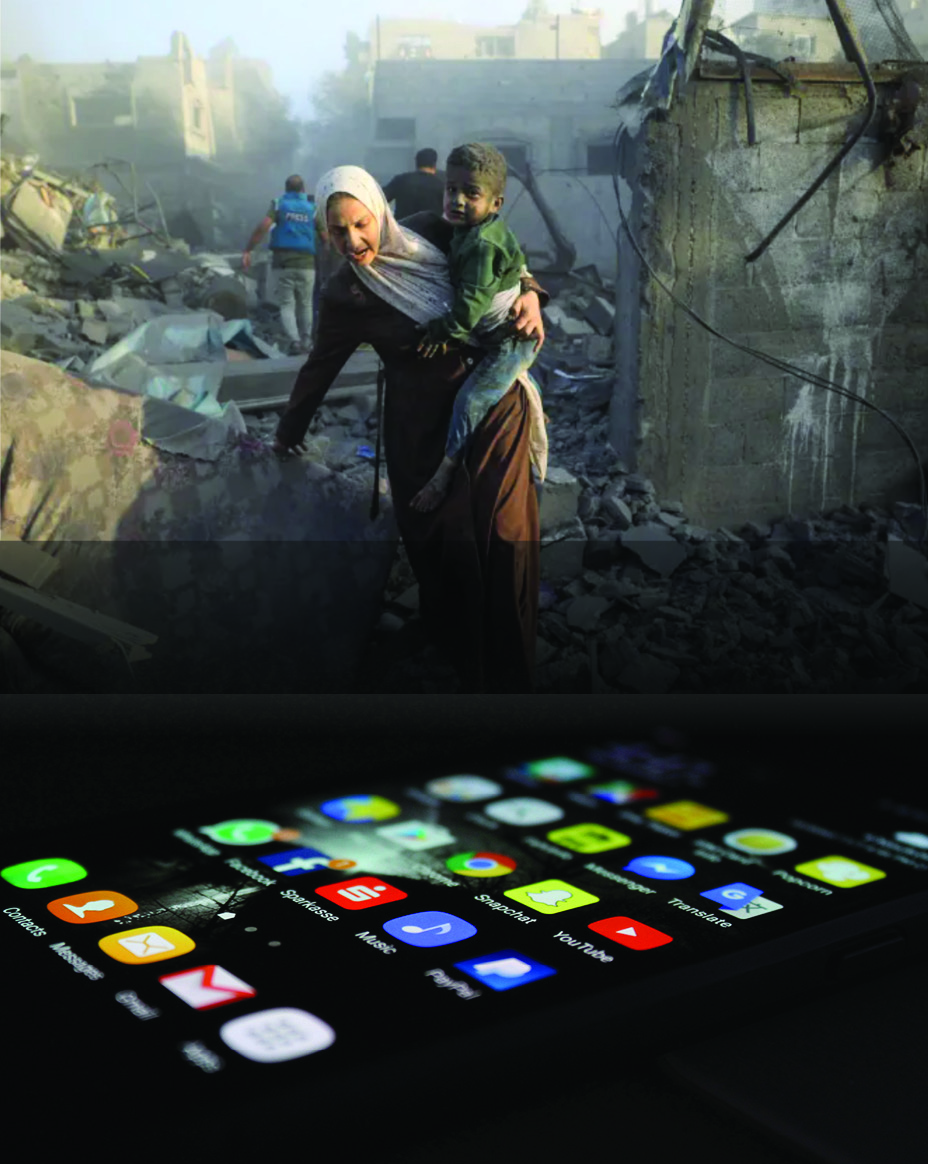An emerging warfare
In an era where wars are being fought not just in battlefields but also on digital platforms, a robust communication framework is essential to check the spread of misinformation

In early times, the waving of a white flag in the middle of the war ground universally meant truce, a symbol of peace. This was further reinforced by communication depictions in movies and shows, where warfare often concluded with gestures of diplomacy or ceasefires. But today, the narrative of war is no longer solely shaped by the actions on the battlefield; it is driven by the media, social media, and public reactions. In many ways, war is facilitated by public outcry and media depictions, shaping geopolitical responses and influencing outcomes.
We are bombarded by images of destruction and weaponry, with media coverage offering near-instant updates from war zones. While this flow of information serves to inform the public, it also sparks immediate and emotional reactions. The nature of warfare has evolved from distant, delayed reports to a real-time experience, with people able to witness unfolding events from their homes or mobile devices. This leads us to a critical question: Is communication an enabler, fostering transparency, or does its overwhelming architecture create deadlock, confusion, and chaos?
In today’s media ecosystem, there is no universal standard on how war should be presented to the public. The depiction of warfare, down to the smallest details, like the make and model of weapons used, floods screens with intensity, overwhelming the masses. This raises a key issue: Should there be a standard protocol or SOP (Standard Operating Procedure) dictating how warfare is reported and disseminated globally?
The rise of ‘mobile journalists’ (MoJos) posting real-time, often opinionated content, combined with AI-driven social media analytics, has significantly altered communication in warfare. AI algorithms, in particular, can be a double-edged sword: used wisely, they can help curb misinformation and deliver relevant content, however, they can also amplify polarisation, promoting divisive content that shapes public opinion and potentially escalates tensions.
This unregulated stream of information can lead to a spiral of reactions, influencing geopolitics and policies, especially when weaponised by state or non-state actors for propaganda purposes. Without proper protocols, this free-for-all communication risks intensifying conflicts rather than resolving them.
Given the current communication landscape, there is a pressing need for an international framework or SOP to guide how warfare is presented, especially in our interconnected world of digital and social media. Protocols could include the controlled release of sensitive information, providing clear guidelines on what can be shared to prevent compromising missions or endangering lives. Additionally, the responsible use of imagery is essential, focusing on ethical, accurate, and contextual depictions that avoid sensationalism and its potential to provoke disproportionate reactions.
AI and algorithmic oversight is another critical element, ensuring that AI-driven platforms don’t amplify polarisation but instead verify the authenticity of images and track misinformation. Social media content moderation should also be strengthened, with platforms implementing warnings, content filters, and fact-checking to manage real-time war-related posts and prevent the spread of misleading information. Finally, balanced reporting from news outlets is crucial. Journalists must adhere to fact-based reporting protocols, avoiding sensational narratives that stir public fear or hysteria. These measures would help structure communication responsibly while avoiding unnecessary escalation during conflicts.
To create a responsible communication system in times of war, the ‘7Ts’ offer a structured approach: Trust, Transparency, Technique and Tools, Technology, Timeliness, Transformation, and Tact. Trust builds credibility through accurate reporting, while Transparency ensures open communication without exposing sensitive details. Technique and Tools emphasise the effective use of media for timely, truthful information, while Technology like AI aids in fact-checking, though it must be managed carefully to avoid bias. Timeliness ensures consistent updates without overwhelming the public, and Transformation tailors messages to different audiences, providing nuanced understanding without fear-mongering. Finally, Tact demands sensitivity, particularly when reporting on human suffering, ensuring a respectful and responsible narrative. Together, these principles foster ethical, balanced communication during warfare.
In today’s geopolitical landscape, the communication strategy surrounding warfare plays a pivotal role in shaping public perception, national policy, and international relations. A single image or piece of information can influence diplomatic responses or sway public opinion to either support or condemn military actions. The modern communication ecosystem, particularly in conflict scenarios, has become a key player in shaping how wars are fought and how they end. The script of warfare is no longer written solely by soldiers or diplomats; it is influenced by news outlets, social media users, and AI algorithms framing the global conversation.
In this chaotic landscape, a deliberate and sensitive communication strategy is essential, not just for transparency, but to avoid fuelling unnecessary destruction or misinformation. Without proper guidance, the free flow of information in war can spiral out of control, exacerbating conflict rather than fostering resolution.
While communication in warfare has made significant strides in bringing real-time transparency to the masses, it has also unleashed a communication frenzy that can cloud judgement, provoke conflict, and fuel polarisation. The need for protocols is clear: communication should be handled with care, tact, and responsibility, ensuring that it informs rather than inflames. A structured approach like the 7Ts can guide how we communicate about warfare, helping to shape a future where information fosters understanding, not destruction.
The writer is former Additional DG, DFF and Festival Director, IFFI. Inputs for the article are provided by Zoya Ahmad and Vaishnavie Srinivasan. Views expressed are personal



